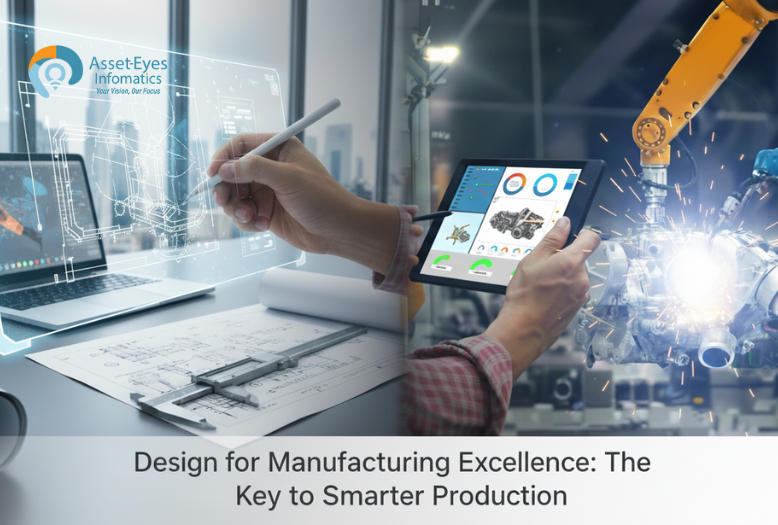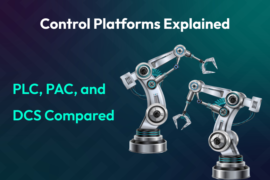Have you ever watched a promising HVAC/R design for manufacturing concept get stuck in development limbo? You know the scenario, the engineering team hits creative momentum. The design looks perfect on paper. All simulations exceed expectations and market research confirms strong demand. But when it reaches the production floor, the worst possible reality unfolds. Tolerances don’t align with design specifications, assembly sequences create unexpected bottlenecks, and what seemed straightforward earlier becomes a production nightmare.
If this sounds familiar, you’re facing one of the most persistent challenges in HVAC/R development today. The gap between innovative design concepts and practical manufacturing execution can derail even the most promising projects. This comprehensive guide will provide you with proven frameworks for ensuring your designs aren’t just innovative, they’re manufacturing-ready from day one.
1. Why Design for Manufacturing Excellence Is More Important Today Than Ever Before
The pressure on engineering directors has never been more intense. You must deliver innovative products faster while managing increasingly complex regulatory requirements. The integration of multiple technologies, and maintaining strict budgets. Traditional sequential development where engineering throws designs “over the wall” to manufacturing simply can’t keep up with these demands.
Modern HVAC/R systems compound this challenge by incorporating mechanical components, electrical controls, IoT sensors, and software integration, each with distinct manufacturing requirements. A design that optimizes thermal performance might create assembly challenges. While electrical integration that enhances functionality could complicate quality control processes.
Here’s what’s at stake when you don’t bridge the innovation-production gap effectively:
Timeline Disruption: Late-stage design changes can add months to development cycles, leading to missed windows in the market and risking competitors gaining an advantage.
Cost Escalation: Manufacturing related design changes become exponentially more expensive as projects progress, often requiring new tooling, revised supplier agreements, and extended validation periods.
Quality Risks: Designs that aren’t optimized for manufacturing often suffer from inconsistent quality, higher defect rates, and increased warranty claims.
Resource Waste: Engineering teams spend valuable time on redesigns instead of focusing on next-generation innovations.
2. The Four-Phase Framework for HVAC/R Manufacturing Excellence
Being successful at designing systems and equipment for manufacturing requires a structured approach that integrates manufacturing considerations throughout the design process, not just at the end. This framework ensures that the strategy behind innovation and manufacturability is in sync, creating products that excel in both performance and producibility.
Phase 1: Early Manufacturing Integration
The most critical phase begins during conceptual design, when manufacturing input can influence design decisions without costly changes. Don’t think of it as limiting innovation but rather channeling creativity in directions that support both performance and production goals.
Start by involving production engineers, quality specialists, and key suppliers before design specifications are finalized. Their insights can identify opportunities and constraints that aren’t obvious from a pure design perspective. For example, when developing an industrial ventilation system, early input from someone with manufacturing experience might reveal that a proposed fan housing configuration, while aerodynamically optimal, requires complex stamping operations that your current equipment can’t handle efficiently.
Use shared metrics like total product cost, time to market, and first-pass yield, instead of separate ones for design and manufacturing. This way both teams can work toward the same goals.
Phase 2: Concurrent Design and Manufacturing Planning
Rather than sequential handoffs, successful product development requires parallel development of design concepts and manufacturing processes. This simultaneous approach detects potential conflicts early, enabling design changes that enhance both performance and manufacturability.
Implementing regular design checkpoints will help evaluate manufacturing implications. These reviews should check if components are easy to assemble, whether the specified tolerances match what the equipment can handle, and how quality will be verified. Each checkpoint should end with a documented agreement between the design and manufacturing teams on what’s feasible and what’s required.
For complex systems like control panels, this phase might reveal that while a proposed component layout is best for electrical performance, it may lead to issues during assembly that could be resolved with minor repositioning.
Phase 3: Validation and Process Optimization
The transition from prototype to production represents a core evaluation phase where the manufacturing plans on paper have to meet practical reality. Use this phase to validate quality control methods and cost projections as well.
Common manufacturing challenges include component variation impacts, assembly sequence optimization, and quality control implementation. Document all process refinements and incorporate lessons learned into both current production planning and future design guidelines.
Phase 4: Continuous Manufacturing Excellence
Manufacturing excellence requires ongoing refinement based on production experience and market feedback. Establish feedback loops that capture manufacturing insights and translate them into design improvements for future products. This continuous optimization ensures that manufacturing capabilities evolve to support increasingly innovative designs.
3. Collaborative Strategies That Actually Work
Effective collaboration between engineering and production teams requires more than good intentions, it demands structured approaches that align objectives and facilitate productive communication. The most successful HVAC/R companies implement specific strategies that transform potential conflicts into collaborative problem solving opportunities.
1. Cross-Functional Team Integration
Create integrated project teams that include both design engineers and manufacturing specialists from project inception. These teams should have shared accountability for project success, measured by metrics that reflect both innovation and manufacturability goals.
Implement regular cross-functional meetings focused on problem-solving rather than status reporting. These sessions should address specific manufacturing challenges with engineering solutions, design modifications that could improve production efficiency, and opportunities to enhance product performance through manufacturing process improvements.
2. Knowledge Sharing and Cross-Training
Develop programs that give design engineers hands-on experience with manufacturing processes and provide production personnel with insights into design rationale and performance requirements. This cross-training creates mutual understanding and respect that facilitates more effective collaboration.
Consider rotating personnel between design and manufacturing roles for specific projects. Engineers who understand manufacturing constraints make better design decisions, while manufacturing professionals who understand design intent can suggest more effective production approaches.
3. Integrated Documentation Systems
Implement documentation systems that capture both design intent and manufacturing requirements in integrated formats. This might include CAD systems that incorporate manufacturing notes, process documentation that explains design rationale, and quality control procedures that reflect both performance and production requirements.
Team leaders should strive to integrate manufacturing information directly into design documentation. This includes assembly sequences, tolerance specifications, quality control points, and material handling requirements. When this is done, it’s more likely to be considered during design decisions.
4. Early Design for Manufacturing Feasibility Assessment Methods
A sustainable product development process is the result of systematic approaches to evaluating production feasibility before any design commitments become expensive to change.
1. Component-Level Analysis
For example, when developing components for an evaporative cooling system design, assess whether proposed heat exchanger configurations can be manufactured with existing forming equipment, or if they require new tooling investments. This early assessment allows for design modifications that maintain performance while supporting efficient production. This kind of analysis should consider not just whether components can be manufactured, but how consistently they can be produced within required specifications.
2. Assembly Sequence Optimization
Evaluate proposed assembly sequences for efficiency, quality control opportunities, and worker safety. The optimal assembly sequence balances manufacturing efficiency with quality verification requirements and should consider both current workforce capabilities and training requirements.
Use simulation tools like Siemens Tecnomatix, Delmia or AutoMod to model assembly processes and identify potential bottlenecks or quality control challenges. These simulations can reveal assembly conflicts that aren’t apparent in individual component analysis and allow for design modifications that improve overall manufacturability.
3. Supply Chain Integration Assessment
Evaluate how proposed designs integrate with existing supplier capabilities and supply chain requirements. This assessment should consider not just component availability, but supplier quality capabilities, delivery reliability, and cost implications.
You should explore supplier development opportunities when your design requirements exceed current supplier capabilities. Just keep in mind this approach requires upfront planning and deliberate relationship building with the right supplier.
5. Leveraging Advanced CAD and Documentation for Manufacturing Success
Modern HVAC/R development relies heavily on sophisticated CAD systems and documentation processes that can either support or hinder manufacturing excellence. The key lies in using these tools to facilitate communication and collaboration rather than simply creating design records.
1. Manufacturing-Integrated CAD Practices
Implement CAD practices that incorporate manufacturing information directly into design documentation. This includes assembly sequences, tolerance specifications, quality control points, and material handling requirements. When manufacturing information is integrated into design documentation, it’s more likely to be considered during design decisions.
Use CAD systems that support collaborative design processes, allowing manufacturing engineers to contribute directly to design development. These systems should maintain design history and rationale, supporting both current manufacturing planning and future design improvements.
2. Documentation Standards for Production Success
Develop documentation standards that serve both design communication and manufacturing implementation needs. This documentation should be clear enough for production personnel to understand design intent while detailed enough to support consistent manufacturing processes.
Consider how documentation will be used on the production floor and design formats that support efficient manufacturing workflows. Documentation that’s difficult to use during production often leads to manufacturing errors and quality problems.
6. How Asset-Eyes Supports Your Design for Manufacturing Excellence Journey
Implementing design for manufacturing excellence relies heavily on precise and comprehensive technical documentation that bridges the gap between innovative concepts and practical production requirements. This is where vendors offering specialized drafting services become an indispensable partner in your development process.
At Asset-Eyes, our HVAC CAD drafting services are specifically designed to support manufacturing-ready documentation that addresses the complex challenges facing HVAC/R engineering directors. Our team understands how proper documentation translates design intent into efficient manufacturing processes, ensuring that your innovative designs can be produced consistently and cost-effectively.
Asset-Eyes experience with HVAC equipment design means we understand the specific challenges of documenting complex systems that integrate mechanical, electrical, and control components. Our CAD drafting services focus on creating mechanical general assembly drawing and detailed component documentation that manufacturing teams can use effectively.
We understand that manufacturing-ready documentation must be clear, accurate, and complete, providing all the information needed for efficient production without ambiguity or interpretation challenges.
Whether you need detailed 2d schematics for individual components or comprehensive system documentation for industrial refrigeration system projects, our team provides the precise, manufacturing-focused documentation that supports your design for manufacturing excellence initiatives.
Conclusion
In conclusion, achieving design for manufacturing excellence in the HVAC/R industry is not just about creating innovative concepts, it’s about ensuring those ideas can be built efficiently, reliably, and at scale. The key lies in early collaboration between design and production, accurate documentation, and continuous process refinement. At Asset-Eyes, we help bridge this critical gap by delivering precise, manufacturing-ready CAD drafting solutions tailored to HVAC/R systems. Our goal is to turn your engineering vision into a practical, production ready reality helping you save time, reduce costs, and bring high-performance products to market with confidence.
Contact Us Now:
📞 +91 9840895134







